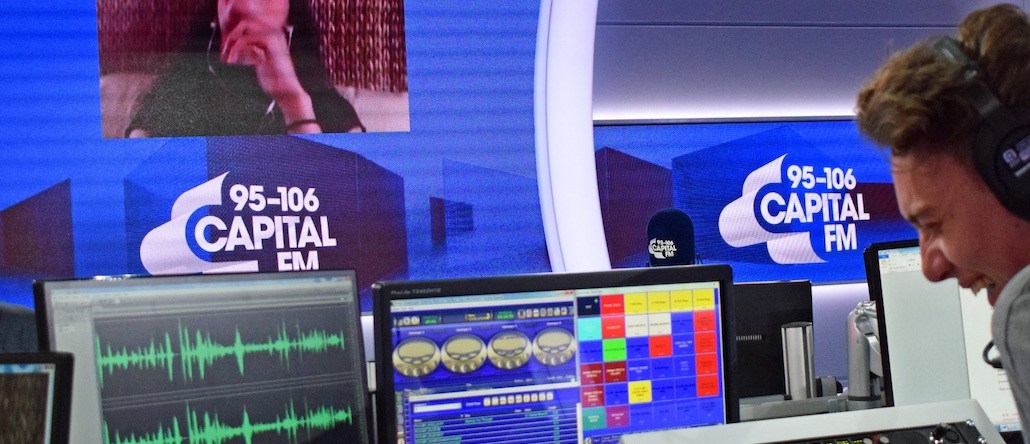Save 50% on a 3-month Digiday+ membership. Ends Dec 5.
How Global Radio is using new ad formats to get audio on the media plan

In the U.K., digital audio now has the scale for advertisers to take it seriously: 22 million listeners each week, according to the most recent numbers from Radio Joint Audience Research, a figure expected to exceed 30 million by 2020. At the same time, buying digital audio has become more simple. Now, Global Radio, which owns stations like Capital, Heart and Classic FM, is tackling digital audio’s biggest challenges in order to push more audio onto the media plan.
“The ad tech infrastructure is in place for advertisers to transact audio in the way it can with display and video,” said Oliver Deane, Global’s commercial digital director.
Global’s digital audio ad exchange, Dax, for example, allows advertisers to target audio campaigns across all digital streaming services (although the buys are a fixed price rather than biddable). First to market in 2014, Dax was working with 14 advertisers by its third month. Now that’s grown to 300 advertisers a month.
According to Deane, Dax’s U.K. listener base has grown from 10 million to 15 million people in the last 18 months; across Europe, it reaches 60 million. Dax taps into ad inventory from 140 music platforms, including all Global stations, rival broadcaster Bauer’s Absolute Radio network, digital streaming service Soundcloud, podcast company Audioboom and services such as Deezer. A noticeable omission is Spotify, even though the service started programmatically trading ads in the U.K. in July last year.
A key barrier for advertisers until now has been measurement and attribution, particularly tracking what happens after the person hears an ad. “You can’t put a cookie in an audio file,” points out Deane.
Since October, advertisers with Global can track whether the audio ad drove people to a site, what time of day, their behavior was on site, like how far down the purchasing journey the user went, and how how different types of creative performed.
“Fashion website Lyst.com put a tag on their site. Then, when one of our users pops up on their site, we know and can monitor their behavior compared to a control group,” added Deane. At launch, 10 percent of Global’s advertisers used this tracking, which has steadily increased each month.
Ad position: web_incontent_pos1
Getting planning tools to be more sophisticated means that advertisers can link audio ads with other media. The majority of digital audio listening, 65 percent in the U.K., takes place on mobile. As such, linking audio ads with outdoor is generating a number of use cases from advertisers like telecoms group BT and McDonald’s.
Improving the creative has also been a focus for Global, which has 60 people, including producers and script writers, working on its audio creative team.
Currently, Global is running its first campaign to use dynamic creative by location for Camelot Group, operators of the U.K. National Lottery, where digital audio listeners in Manchester will hear different ads than those in London. “We can reference data points like the time of day, weather, live flight prices, we’re excited by that. It enables the targeting of specific audio advertising.” At the end of last year, Sky Bets, with agency MediaCome, ran a similar campaign delivering ads to listeners in regions relating to football fixtures.
According to Charlie Yeates, commercial trading director at MediaCom, digital audio is featured on roughly a third of the agency’s media plans, which has doubled from a year ago. Largely, this growth is due to a change in media consumption, but he said the benefit of Dax is that it’s simplified buying traditional radio inventory alongside digital streaming.
“That’s the biggest obstacle or the biggest reason for growth,” said Yeates. “The better the data that we can merge with and use to convince clients they are reaching new audiences, not just old audiences, there’s no consistent measurement between old media and new media. We’re finding an audience we haven’t been able to talk to before and when we want to. That is crucial.”
Ad position: web_incontent_pos2
Images: courtesy of Global Radio.
More in Media

Digiday+ Research Subscription Index 2025: Subscription strategies from Bloomberg, The New York Times, Vox and others
Digiday’s third annual Subscription Index examines and measures publishers’ subscription strategies to identify common approaches and key tactics among Bloomberg, The New York Times, Vox and others.

From lawsuits to lobbying: How publishers are fighting AI
We may be closing out 2025, but publishers aren’t retreating from the battle of AI search — some are escalating it, and they expect the fight to stretch deep into 2026.

Media Briefing: Publishers turn to vertical video to compete with creators and grow ad revenue in 2026
Publishers add vertical video feeds to their sites to boost engagement, attract video ad spend and compete with news creators.
Ad position: web_bfu




